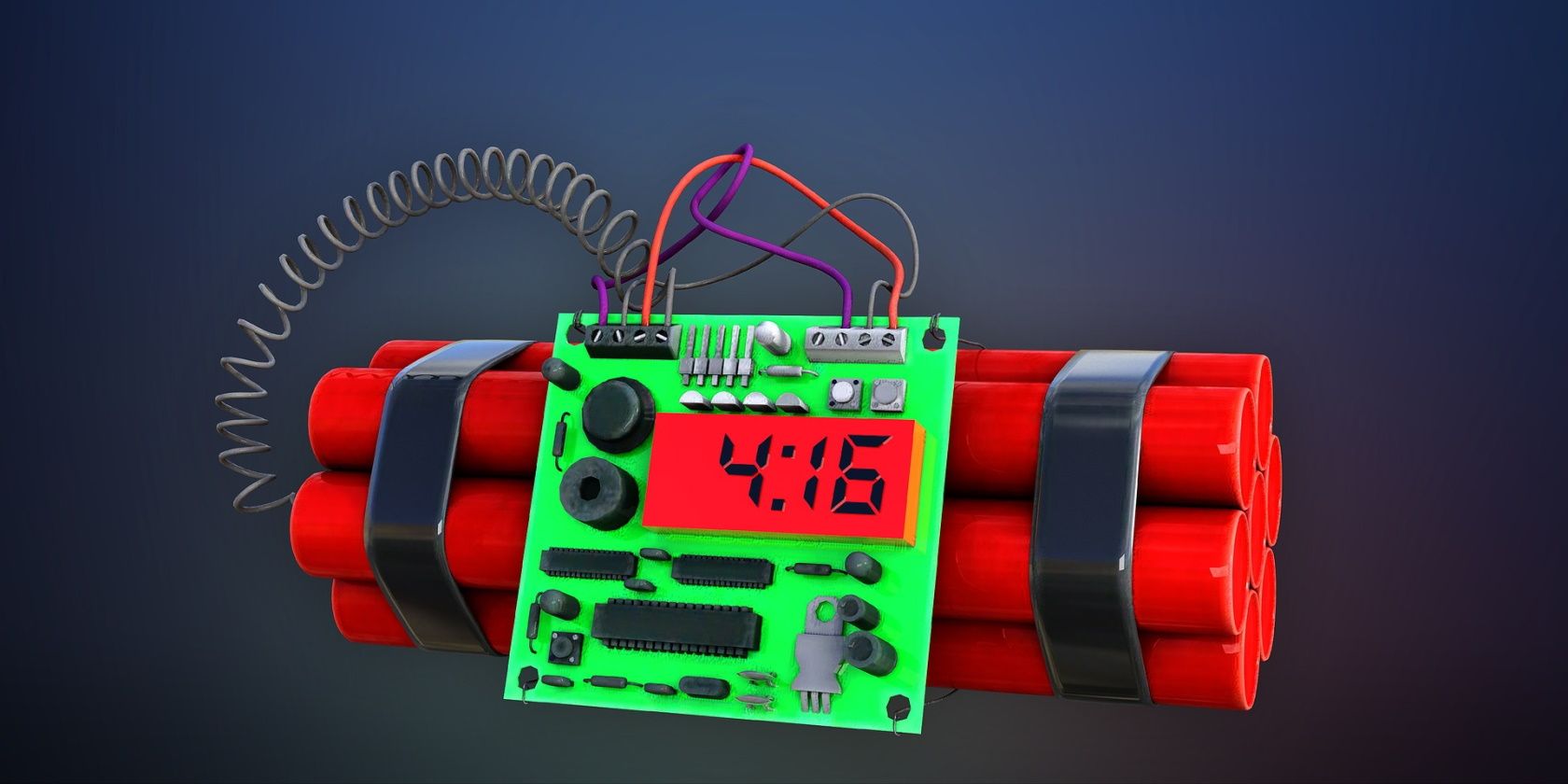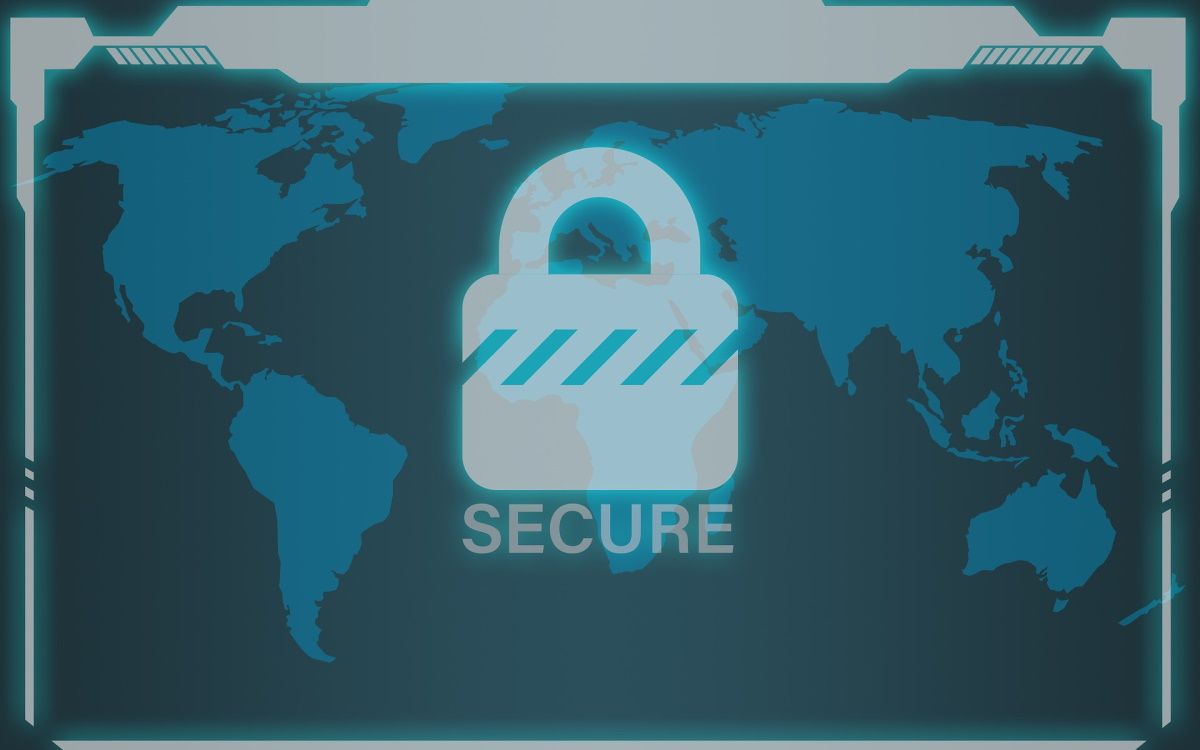Most cyber-attacks have an immediate malicious impact on your computer. For example, if you unknowingly download ransomware in an email attachment, it will typically lock your files immediately. However, logic bombs attack differently. A logic bomb is malicious code that remains concealed until triggered by a certain action.
The downside of a logic bomb is that you’re unaware that it’s planted and you don’t know when it’ll explode. We’ll take you through how a logic bomb works and how you can protect yourself from it.
What Is a Logic Bomb?
A logic bomb—also known as slag code—is a piece of malicious code that hackers insert into a computer network, software program, or digital device. This code lies dormant until triggered by a certain condition. When the bomb is triggered, it “explodes” and wreaks havoc on your computer system. What makes it more dangerous is that it can detonate repeatedly before you notice it.
Usually, logic bombs are set to detonate on a particular date. These types of logic bombs are often referred to as time bombs. Other types of logic bombs are triggered when you open a certain file or type in a specific command on your PC. Usually, logic bombs are installed by someone with high-level access, such as a systems administrator.
Common malicious activities that logic bombs commit include:
- Deleting or corrupting data.
- Gathering and stealing sensitive data.
- Clearing out hard drives.
- Restricting or preventing user access.
How a Logic Bomb Works
The way a logic bomb works depends on how it’s programmed. Every logic bomb is unique, and that’s why they’re difficult to track. They’re usually created to be as undetectable as possible.
What’s common about all logic bombs is that they’re secretly inserted into a computer network through malicious code. Hackers can also hide logic bombs in computer viruses, worms, or Trojan horses.
Logic bombs have two types of triggers: the positive and the negative trigger. A positive trigger initiates a logic bomb when a condition is met. For example, a logic bomb with a positive trigger detonates during the date of a major event. A negative trigger initiates a logic bomb when a condition is not met. For example, a logic bomb with a negative trigger detonates when someone enters the wrong credentials when logging in on a PC.
Two Logic Bomb Examples
There are several ways hackers can use logic bomb attacks. Here are two common ways:
1. Fake or Cloned Software
In this type of attack, the software comes with a pre-loaded malicious code. The logic bomb will explode as soon as you launch that particular software program.
2. Keylogger
In this use case, hackers use a combination of spyware and logic bombs to steal your personal information. For example, a logic bomb could wait for you to launch a specific website or app. From here, the logic bomb would then trigger a keylogger to launch. Any personal information that you type in will then be sent straight to the hacker.
A Brief History on Logic Bomb Attacks
In the early 2000s, a dissatisfied systems administrator wiped out UBS servers because he was unhappy with his bonus. The attack affected about 2,000 servers and 400 branch offices.
In 2013, a logic bomb was set off to wipe the hard drives of computers for banks and broadcasting companies in South Korea. The attack disabled a few ATMs and wiped the hard drives of at least three banks and two media companies, simultaneously.
In 2016, a freelance programmer voluntarily caused Siemens’ custom-automated spreadsheet to keep malfunctioning. Every time the spreadsheet had an issue, they’d call him to come to fix it for a fee. The logic bomb went undetected for two years. It was only discovered while he was out of town and had to hand over the administrative password to his software.
Top Signs of Logic Bombs
Early detection is critical when it comes to logic bombs. The sooner you’re aware of a potential problem, the sooner you can seek a solution and avoid potential damage. While logic bombs are very difficult to spot, the following signs and symptoms are a call for concern:
- Your important files start to suddenly disappear or seem to be altered.
- Your passwords no longer work—but you don’t remember changing them.
- You accidentally downloaded software from a known malicious site. The software might not cause instant damage, but it might be hiding malware in the form of a logic bomb.
How to Prevent Logic Bomb Attacks
To prevent logic bombs, here’s what you need to do:
1. Use a Reputable Antivirus Program and Keep It Updated
A robust antivirus program can protect your devices from viruses and malicious codes that might be carrying logic bombs. To help protect your PC from any potential threats, you should keep the antivirus program up-to-date. In addition to this, make it a habit to scan compressed files to make sure there is nothing hidden within them.
2. Avoid Shady Websites and Pirated Software
Avoid clicking on suspicious and unsecured links and downloading software from shady websites. Also, avoid downloading pirated software since this is one of the most popular methods for delivering malware. Make it a priority to download software programs from reliable sites.
3. Keep Your Operating System Updated and Back Up Your Data
Keeping your systems up to date can protect you from logic bombs and several other security threats. Updates provide improved features and also help bridge any security gaps on your devices. In addition to this, it’s advisable to regularly back up your critical data. That way, your data will be safe should you succumb to logic bomb attacks.
4. Increase Awareness in Yourself and Others
Train friends, family members, or colleagues on spotting phishing emails, shady software, and suspicious websites. If you run a company, make sure to protect all computers individually. Also, train your staff and make them aware that they’re an integral part of your company’s cybersecurity.
To further limit the chances of logic bomb attacks, it’s advisable to limit administrative privileges to a certain group of employees.
Can Logic Bombs Be Removed?
Although prevention is critical, you might still remain vulnerable after taking multiple steps to protect your devices. Thankfully, if you detect logic bomb attacks soon, they can be removed before causing significant damage.
The efforts required for removing logic bombs are relatively similar to those used when removing other forms of malware. Such tasks are often best handled by IT security professionals. For this reason, it’s advisable to call an expert immediately if you suspect you’ve been hit by a logic bomb attack.
Stay Safe From Logic Bomb Attacks
Logic bombs may be slow to reveal themselves, but they can quickly explode into major problems. Someone you know can easily hack you and plant a logic bomb in your computer.
While logic bombs are hard to detect, the cybersecurity tips we’ve mentioned here can help protect you. These tips will also protect you from various other cyber threats.




